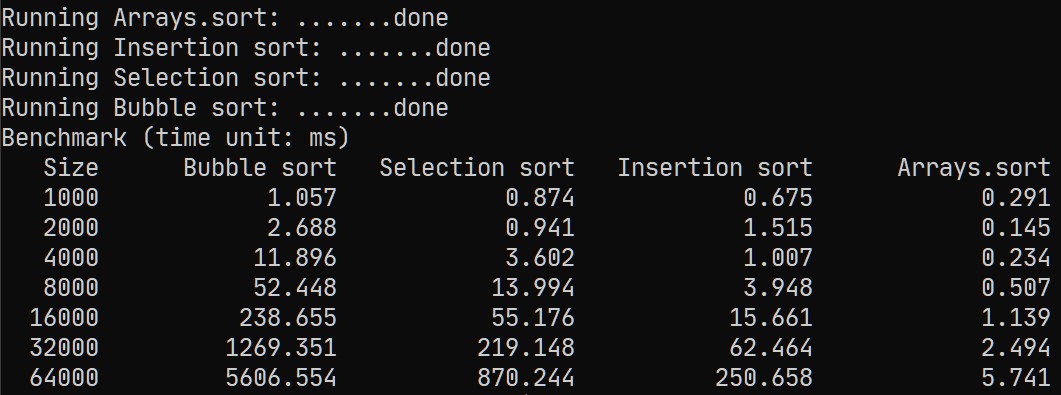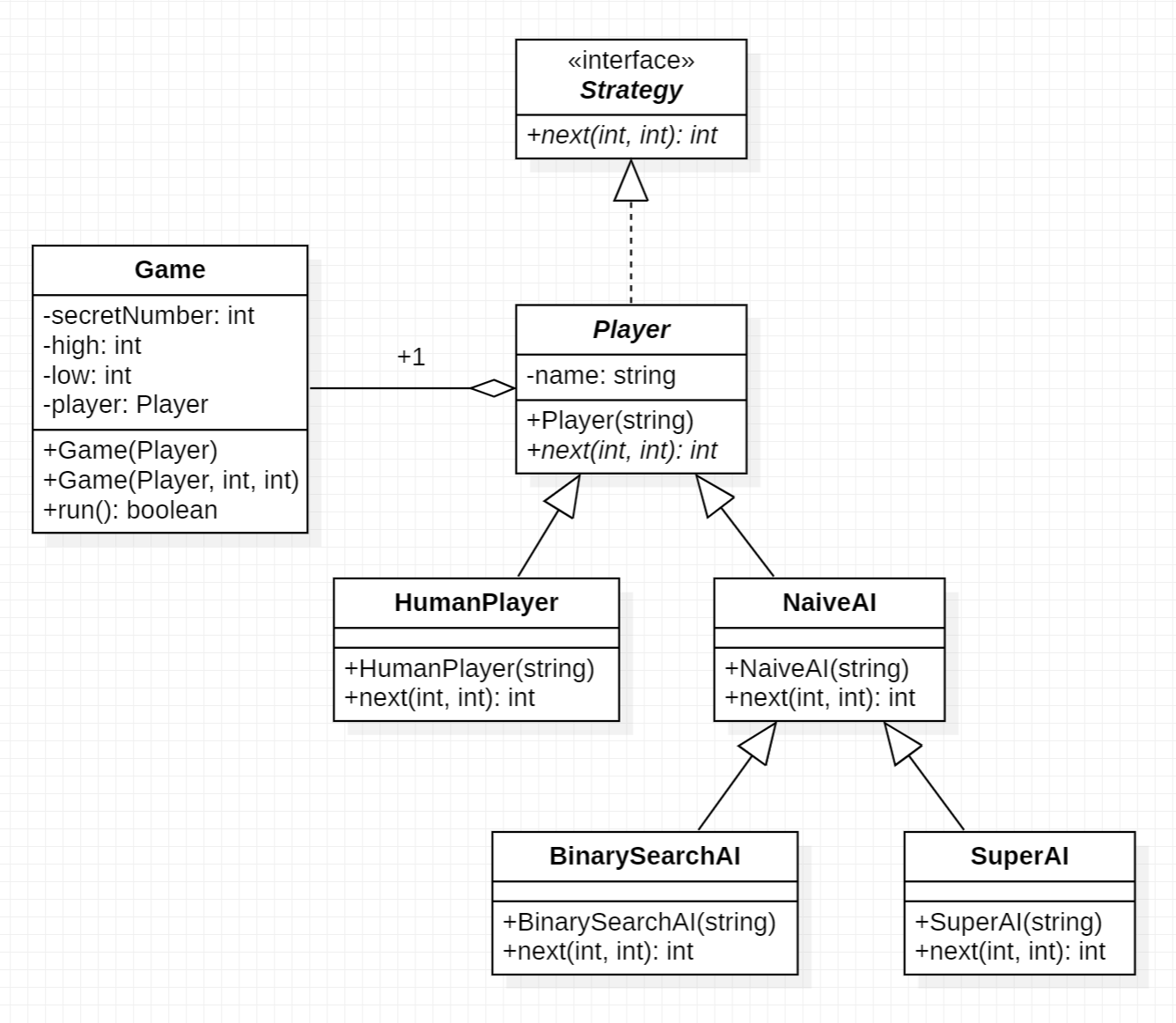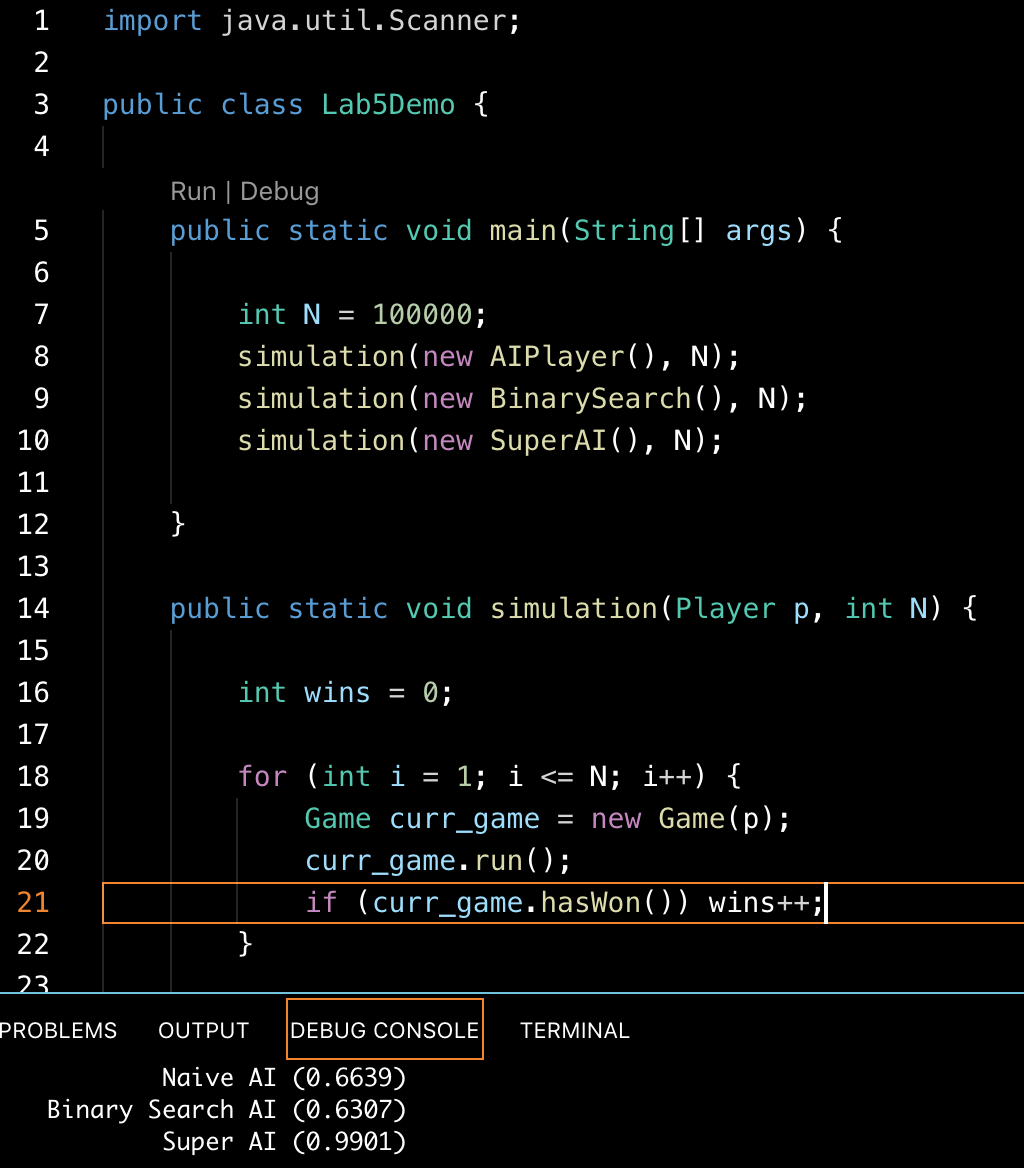Java Programming
Time: 09:30 ~ 12:30
-- James Gosling
-- Baruch Sadogursky
Course Information
Instructor Information
- Name: 盧政良 (Zheng-Liang Lu)
- Email address: arthurzllu@gmail.com
Wi-Fi Access
- SSID: CSIE_guest or CSIE_guest-5G
- Account: guest_PPNFH
- Passwords: K4YGTNNQ
Grading Policy
You need to finish all programming labs as the minimal requirement to acquire the certificate of course completion. You could find your name here.
For the record, this course is offered without any course credit of National Taiwan University, in compliance with Implementation Regulations Governing Colleges Continuing Education, Ministry of Education.
Make-up Class Method Students are advised to utilize the website NTU COOL for class compensation. Please note, the required login credentials are those associated with your individual training class account.
Recording Classroom Lectures Policy Recording of classroom lectures is prohibited unless advance written permission is obtained from the class instructor and any guest presenter(s).
Goal
This course is designed for the students who want to learn Java but have no programming experience before. We will start with the very beginning of program design and fundamental concepts about programs and machines. You are expected to be capable to implement your idea in Java independently after 30 hours of lectures. Furthermore, I wish you could learn other programming languages without suffering from starting over.
The topics delivered in the following weeks are as follows:
- Java programming (the level similar to freshmen in CS departments) ... we don't have any programming course after 1st year of college program
- Computational thinking ... we think in the way like machines when learning programming; the machines think like human when it comes to AI; eventually, human ?= machine
- Algorithms and data structures ... foundation to CS
Syllabus
Algorithm-Based Programming
- Data types, variables, and operators
- Flow controls: branching & repetition
- Array and more data structures
- Methods and recursion
Object-Oriented Programming
- Object and class
- Encapsulation
- HAS-A relationship: aggregation & composition
- IS-A relationship: class inheritance & interface inheritance
- Method overriding and subtype polymorphism
OOP Design Rules
- SOLID principles
- Inversion of control (IoC) and dependency injection (DI)
- Selected design patterns: singleton, strategy, iterator
Applications
- Exceptions and exception handling
- Swing for GUI design
Schedule
[
247,
250,
251,
252,
253,
254,
255,
260,
261,
263,
265,
266,
268,
269,
271,
274,
275,
276,
277,
278,
280,
281,
281n,
282,
283,
284,
286,
289,
290,
291,
292,
293,
294,
295,
296,
297,
298,
299,
301,
304,
305,
306,
307,
308,
310,
311,
312,
313,
314,
315,
316,
318,
319,
320,
321,
322,
323,
325,
326,
328,
329,
330,
331,
335,
336,
337,
338,
340,
341,
342, 343, 344, 347,
348,
349,
353,
355,
359,
361,
365,
369,
371,
379,
381,
384,
386,
390,
394,
397,
400,
402,
405,
407,
411,
415,
442
]
| 2025.6.23 |
|
| 2025.6.24 |
|
| 2025.6.25 |
|
| 2025.6.26 |
|
| 2025.6.27 (video) |
|
| 2025.6.30 |
|
| 2025.7.1 |
|
| 2025.7.2 |
|
| 2025.7.3 |
|
| 2025.7.4 |
|
| Promotion |
Sample Code
Gradebook
Programming Labs
Late Homework Policy All programming labs should be submitted before the last date of class in order to deliver your final grades to the office so that the certificates can be issued soon. (See a recent complaint letter here.)
Homework Submission Send your source codes (the files with .java extension) to my email address shown in the beginning of this course page. Remember to indicate the class number, your full (Chinese) name, and homework number in the email title. For example, [Java 442] Homework 1 盧政良. Do not attach any class file because any executable file will be ruled out by Gmail.
Lab 0 Genesis
Install JDK24 and Eclipse (or any IDE you have been familiar with, say IntelliJ) in your computer (desktop/laptop). Note that you have to sign up an Oracle account before downloading the JDK installer. No need to email me for this lab unless you cannot complete the installation. You may also know the JDK binaries offered by different vendors, which are summarized in this article.
Lab 1 Number-Guessing Game
Write a program for number-guessing game (you may refer to Guess the Number if you have never played this game). The program first generates a secret number ranging between 0 and 99, inclusive. Then the program asks the player to guess a number. If the input number is equal to the secret number, then the player wins. If not, then update the range depending on the input accordingly. (For example, assume that the secret number is 42. If the player types 50 for the first time, then the program shows (0, 49) on the screen.) When there is only one integer left, the player loses the game. Also, make sure that the player types a number in the feasible range; otherwise, ask the player to redo the input.
Lab 1-1 (Optional)
Add some strategies (AI?) to play this game and calculate each winning rate by using these strategies for 1e5 times. For example, the naive strategy is to guess a number in random, and its result is around 66%. Surprisingly, the winning rate for binary search is about 63%, not as expected to beat the naive one. Why?
Lab 1-2 (Optional)
Find the optimal strategy to beat the former two. The result is shown below. As you could see, the winning rate of my optimal strategy reaches 99%!
Lab 1-3 (Optional)
Modify the game loop which allows the player to guess at most 7 times (why?). Also report their performance like below:
The performance of binary search remains ~63% while the other two degrade severely!
Lab 2 Contagion Control
The virus, COVID-19 (aka Wuhan coronavirus), is primarily spread from close contact with infected people. Your task is to design an algorithm to identify the chain of virus transmission from one person to the next. For simplicity, let N be the number of citizens, each denoted by an integer ID from 0 to N − 1. Each citizen is asked to keep a record of the ID of the person they comes in contact with. It is assumed that no two citizens keep the same ID of the citizen in close contact. To avoid typing numbers by hand, I suggust using the shuffling algorithm to generate a random sequence of 0, 1, 2, ..., N − 1 for testing. For example, consider N = 16 and assume that the citizen with ID 0 is initially infected. Your program is to identify and list all IDs along this infection chain. A possible output is shown below.
Lab 2-1 (Optional)
Modify your solution to show all group members and calculate how many groups in the random sequence. For example, consider N = 16 and the outputs are shown as follows.
Lab 2-2 (Optional)
Replace the native array by ArrayList. This lab asks you to understand the usage of ArrayList and Java generics, which won't be introduced comprehensively in this lecture (see Java Programming 2).
Lab 3 Performance Benchmark for Sorting Algorithms
First, implement three sorting algorithms (bubble sort, selection sort, and insertion sort) mentioned in class. Then compare the running time of these sorting algorithms together with Arrays.sort() (check its API here). Since the performance of these comparison-based sorting algorithms is sensitive to the order of data sequence, I suggest that you could calculate the average running time for various sizes and make a benchmark for these four algorithms (using the doubling hypothesis), shown as below.

You may use System.currentTimeMillis() or System.nanoTime() to make timestamps (remember to use long variables). Note that the actual numbers in the table may differ from mine due by to variety of runtime environments. For your information, the benchmark test is completed on AMD Ryzen 9 3900X with the memory DDR4-3200 128 GB. If you are interested, you may watch this video for 15 sorting algorithms.
Lab 3-1 (Optional)
Compare the growth rate of running time for each sorting algorithm to the theoretical prediction by big-O. Recall that the first three sorting algorithms runs in O(n ^ 2) time while Arrays.sort() runs in O(n log n) time.
Lab 3-2 (Optional)
Implement the algorithm of cocktail sort which runs in O(n ^ 2) time. You may refer to cocktail sort in Wikipedia.
Lab 3-3 (Optional)
Implement Shell's sorting algorithm which runs in O(n (log n) ^ 2) time. You may refer to shell sort in Wikipedia, or this article.
Lab 3-4 (Optional)
Implement the merge sort algorithm which runs in O(n log n) time. You may refer to merge sort in Wikipedia.
Lab 3-5 (Optional)
Implement the quick sort algorithm which runs in Θ(n log n) time. You may refer to quick sort in Wikipedia.
Lab 4 Fast Power Using Recursion
Let x be any real number and n be any nonnegative integer. Write a program which calculates x ^ n by recursion. For example, 2 ^ 10 = 1024. Try to make your program run in O(log n) time. Note that you are not allowed to use Math.pow() and any loop in your solution.
Lab 4-1 (Optional)
Compare your solution to the naive method (running in O(n) time). Report the speedup.
Lab 4-2 (Optional)
As you can see, the double overflow occurs when the exp exceeds 1000. To calculate the correct numbers, you may use BigDecimal for arbitrary digits.
Lab 4-3 (Optional)
Modify your solution for negative n.
Lab 4-4 (Optional)
Convert the recursion version into the loop version.
Lab 4-5 (Optional)
Introduce bitwise operators (&) and shift operators (>>) to your solution.
Lab 4-6 (Optional)
Let M be any positive int value. Write a function to calculate x ^ n mod M for n = 10000000. You may use the polynomial remainder theorem (see here).
Lab 5 Refactoring Number-Guessing Game by Using Proper Design Patterns
Rewrite your program of Lab 1 in OOP style. First analyze the functionalities of Lab 1 and then define at least two classes for each functionality. For instance, you could create two objects: one object to manage the game procedure, the other for the player who generates an integer within feasible range during the game. To achieve this, you will need to define a protocol, similar to the relationship between the System.out.println method and the toString method of any Java object. Hence the game will have minimal dependency on the player (the game won't need to know which kind of player during the game procudure). A possible class design in UML is shown below.

Lab 5-1 (Optional)
Try various strategies for this game. For example, the naive strategy is to guess a number in random, and the binary-search strategy is to return the number in the middle of the feasible range. Then compare the winning rates by simulating these strategies for 1e5 times.

Monte Carlo Labs
These labs listed below are not manditory.
Estimation of Euler Constant
Write a program which estimates the Euler constant e ~ 2.7183 by Monte Carlo simulation. The procedure is as follows: (1) Set N = 1e5 and M = 0; (2) for each iteration, find the minimal number k of random numbers which follows a standard uniform distribution (simply use Math.random() in this case) so that the sum of these random numbers is greater than 1; (3) do M += k; (4) then the estimator of e can be done by M / N.
Geometric Brownian Motion
Write a program which simulates the price movement of one stock by Monte Carlo simulation. The input is as follows: (1) S (spot price), (2) r (annual interest rate), (4) v (annual volatility), (5) T (time to maturity, year), (6) m (periods within T), (7) N (number of replicates). Now define dt = T/ m. For each time 0 < i <= m, calculate the future price S(i) by S(i) = S(i - 1) * exp((r − 0.5 * v ^ 2) * dt + v * sqrt(dt) * RANDN), where RANDN is a random variable following a standard normal distribution (use the method nextGaussian() of Random objects; see Random from Oracle). Repeat the procedure above for N times. Then draw all price paths on the canvas. You may refer to my solution: GBM.zip.
European Call Price
Write a program which calculates the price of European call options. The input is as follows: (1) S (spot price), (2) X (strike price), (3) T (time to maturity, year), (4) v (annual volatility), (5) r (annual interest rate), (6) N (sample size). The price of European call options can be done as follows: (1) Set N = 1e5 and the call price c = 0; (2) for each iteration, calculate the future price S’ by S’ = S * exp((r − 0.5 * v ^ 2) * T + v * sqrt(T) * RANDN), where RANDN is a random variable following a standard normal distribution (use the method nextGaussian() of Random objects; see Random from Oracle); (3) if S’ − X > 0, do c += S’ − X; (4) after N iterations, do c /= N. Finally, output the option price c. For example, the European call price is 14.2xxx for the case of S = 100, X = 100, T = 1, v = 0.3, r = 0.05.
References
Java (Introductory Level)
- Patrick Niemeyer and Daniel Leuck, Learning Java, 5/e, 2020
- Chua Hock Chuan, Programming notes, Nanyang Technological University, Singapore
- Robert Sedgewick and Kevin Wayne, Introduction to Programming in Java, Department of Computer Science, Princeton University
- Mehran Sahami, CS 106A: Programming Methodology, Stanford University, 2022sp
Java (Advanced Level)
- Joshua Bloch, Effective Java, 3/e, 2018 (highly recommended!!!)
- Raoul-Gabriel Urma, Mario Fusco, Alan Mycroft, Modern Java in Action, 2018
- Ben Evans, David Flanagan, Java in a Nutshell, 7/e, 2019
- Scott Oaks, Java Performance: The Definitive Guide, 2014
- Jeanne Boyarsky and Scott Selikoff, OCP Oracle Certified Professional Java SE 17 Developer Study Guide: Exam 1Z0-829, 2022
Data Structures and Algorithms
- Robert Sedgewick and Kevin Wayne, Algorithms, 4/e, 2011 (You may refer to its official website for slides and sample codes: http://algs4.cs.princeton.edu/home/.) (highly recommended!!!)
- Thomas H. Cormen, Charles E. Leiserson, Ronald L. Rivest, Clifford Stein, Introduction to Algorithms, 4/e, 2022
- Steven S Skiena, The Algorithm Design Manual, 2/e, 2008
- Aditya Bhargava, Grokking Algorithms: An illustrated guide for programmers and other curious people, 2016 (a lovely book)
Object-Oriented Analysis & Design
- Erich Gamma, Richard Helm, Ralph Johnson, John Vlissides, Grady Booch, Design Patterns: Elements of Reusable Object-Oriented Software, 1994
- Robert C. Martin, Agile Software Development, Principles, Patterns, and Practices, 2005
- Alexander Shvets, Gerhard Frey, and Marina Pavlova, OOP Design Rules
- Eric Freeman and Elisabeth Robson, Head First Design Patterns: Building Extensible and Maintainable Object-Oriented Software, 2/e, 2020 (highly recommended!!!)
- Kenneth M. Anderson, Object-Oriented Analysis & Design, Department of Computer Science, University of Colorado, 2012fa (highly recommended!!!)
- Zach Tatlock, CSE 331: Software Design and Implementation, Computer Science & Engineering, University of Washington, 2017 winter (highly recommended!!!)
- Josh Bloch and Charlie Garrod, Principles of Software Construction: Objects, Design, and Concurrency, Carnegie Mellon School of Computer Science, 2016fa
- Max Goldman and Armando Solar-Lezama, 6.005: Software Construction, EECS, Massachusetts Institute of Technology, 2016fa
Computer Organization/Architecture
- Randal E. Bryant, David R. O'Hallaron, Computer Systems: A Programmer's Perspective, 3/e, 2015
- Seth Goldstein and Franz Franchetti, Introduction to Computer Systems, School of Computer Science, Carnegie Mellon University (highly recommended!!!)
- Ulrich Drepper, What Every Programmer Should Know About Memory, 2007
AP Computer Science
Taiwan
- Advanced Placement Computer Science (APCS), National Taiwan Normal University
- 台灣資訊培訓相關資源彙整
- 資訊之芽, C++ & Algorithms, 台大資工, 2019 (also see https://neoj.sprout.tw/)
- NHSPC歷屆考古題, 2018
- 高中生程式解題系統 (An Online Judge System For Beginners)
- TOI 臺灣國際資訊奧林匹亞競賽選訓營, 題庫, National Taiwan Normal University
- Yukie, 我的孩子適合考 APCS 嗎?, 2019.3.16
American School
- Roselyn Teukolsky M.S., Barron's AP Computer Science A, 7/e, 2015
- You can find the table of contents here; our lecture covers more than 90% contents of AP Computer Science A.
- tchenuag, Auto-Graded Course (AP CS A) ... you can do more exercise here ...
Misc
- LeetCode Online Judge (highly recommended!!!)
- Top 10 Algorithms for Coding Interview (highly recommended!!!)
- Problem Set, codeforces
- TED-Ed: lessons worth sharing
- Bettina Bair, Inside your computer
- Kanawat Senanan, How computer memory works
- David J. Malan, What's an algorithm?
- Alex Gendler, The Turing test: Can a computer pass for a human?
- Kevin Slavin, How algorithms shape our world
Additional Reading
- Peter Norvig, Teach Yourself Programming in Ten Years
- Mewra, [心得] 面試心得分享, 2011.2.28
- I Do Not Know C, Dmitri Gribenko, 2015.3.5
- Erik Trautman, Why Learning to Code is So Damn Hard, Viking Code School, 2015.2.4
- code 海無涯,不想溺斃就快抓緊這 6 個緊急救生圈吧!, TechOrange, 2015.5.26
- 沒有 C 語言之父,就沒有如今的 Android、AWS 跟賈伯斯, OrangeTech, 2015.10.19
- 24 小時學會 Java 程式?想成為武林高手,還是先花 10 年磨一劍吧!, TechOrange, 2015.8.19
- 【洪士灝 v.s 蘇文鈺】真正的資訊教育不在學寫程式,關鍵在學用電腦解決問題, TechOrange, 2016.1.4
- AlphaGo: using machine learning to master the ancient game of Go, Google, 2016.1.27
- 程式自學十年心得:想吃這行飯,學好演算法與資料結構才能讓你站穩腳步, TechOrange, 2016.4.13
- Arthur Liao, 程式員求生指南:關於寫程式的二三事, 2016.5.9
- 進化吧工程師!15 道工法,你也可以和矽谷神人們一樣優秀, TechOrange, 2016.5.27
- Airbnb 資深工程師分享:怎樣才是正確、有效的 code review, TechOrange, 2016.8.16
- 從小學 Coding 目的不是要當工程師,是培養台灣人缺乏的邏輯思考, TechOrange, 2016.12.29
- Donald Smith, Oracle JDK Releases for Java 11 and Later, 2018.9.11
- Jserv's enlightenment
- Linux 核心設計課程說明, Department of Computer Science and Information Engineering, National Cheng Kung University, 2020sp
- Re: [問卦] 寫程式語言的語言是怎麼來的?, 2018.9.28
- Re: [問卦] 作業系統學Linux就好?, 2019.2.19
- Re: [問卦] C語言最難的部分是哪一個?, 2019.1.17
- Re: [問卦] 不用函數庫和亂數 寫程式求pi值的方法?, 2019.4.19
- Re: [問卦] C語言編譯器用哪個才夠專業?, 2019.4.22
- A text-mode tetris game, 2019